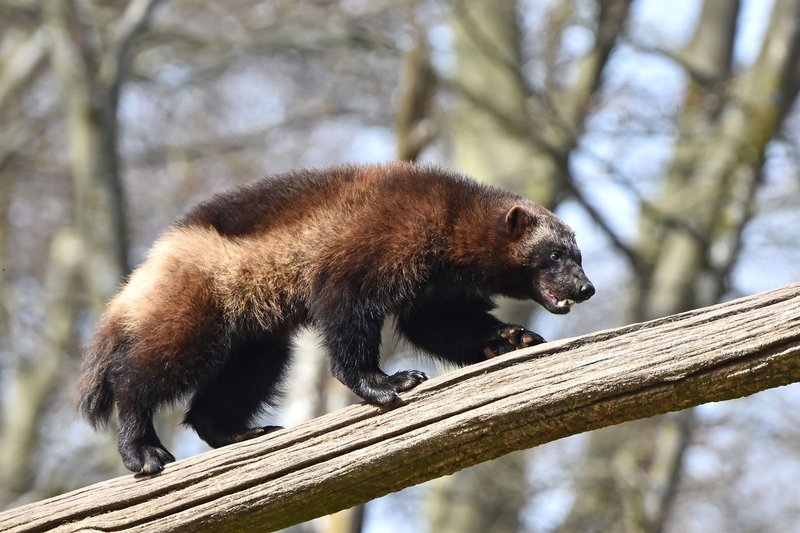
Wolverines are often misunderstood. They’re not just little furry beasts with sharp claws; they’re skilled hunters, resilient survivors, and dedicated caregivers. So, how do these wild creatures manage to raise their young? Let’s dive into the fascinating world of wolverine parenting and explore how they make it work in the great outdoors.
Wolverine Family Life: An Overview
Wolverines typically live solitary lives, but they become quite social during the breeding season. This usually occurs between late winter and early spring. After a brief courtship, a male and female will mate, but afterward, the male moves on, leaving the female to fend for herself and their soon-to-be family.
Wolverine pregnancies last about **30 to 50 days**. In that time, the female prepares for the arrival of her cubs. Finding a secure denning site is crucial; it’s like setting up a nursery in a world full of potential threats. Wolverines often choose dens in snow caves, burrows, or rocky outcrops, ensuring they’re hidden from predators and harsh weather.
Once the cubs arrive, they’re small and helpless, usually weighing just a few ounces at birth. They rely entirely on their mother for warmth, food, and protection. It’s during this early stage that the female’s dedication truly shines, as she provides everything her young need to survive.
The Den: A Safe Haven for Cubs
The den is where the magic happens. For wolverines, choosing the right spot is critical. These dens offer cubs protection from the elements and predators.
– **Location Matters**: Wolverines prefer remote locations, often at higher elevations. This choice helps keep their young out of sight from potential threats, like larger predators or even curious humans.
– **Comfort**: The den is usually lined with soft materials like moss, grass, and fur, creating a cozy environment for the newborns. This comfort is essential, especially in the harsh climates wolverines often call home.
As the cubs grow, they stay in the den for several weeks. You might picture a cozy little family unit, with the mother returning frequently to feed her young, bringing back food such as small mammals, birds, or even carrion. This ensures the cubs gain strength and energy to explore the world around them.
Feeding and Caring for the Young
You might be wondering, how does a wolverine mom feed her cubs? Well, wolverines are opportunistic feeders, which means they’ll eat whatever is available. This trait is especially important when raising young.
– **Hunting Skills**: After the cubs are around three weeks old, the mother starts to bring food back to the den. She may catch smaller animals or scavenge leftovers from larger predator kills.
– **Teaching Survival**: As the cubs grow and become more active, the mother begins teaching them essential skills such as hunting and foraging. It’s like sending your kids to school, where they learn important life lessons through play and practice.
This early education is crucial. By the time the cubs reach about **two months old**, they should be ready to leave the den and accompany their mother on hunting trips.
Social Structure and Independence
Wolverine families have a unique social structure. The mother is the primary caregiver and protector, while the male contributes little after mating. After about three months, the cubs begin to rely less on their mother. They start to explore their surroundings and practice their newfound skills.
– **Encouraging Independence**: The mother encourages independence by allowing the cubs to experiment with hunting and foraging on their own. This phase is essential for their survival; they learn to fend for themselves as they prepare to leave their mother’s care.
– **Parenting Style**: Wolverines are not overly affectionate like some other animals; instead, they focus on teaching their young how to survive in the wild. It’s a tough-love approach that prepares the cubs for the challenges ahead.
By the time they’re around **six months** old, wolverine cubs are generally ready to venture out on their own. They may stay close to their mother for a while, but eventually, they’ll establish their territories.
Challenges Wolverines Face While Raising Cubs
Raising young wolverines comes with its fair share of challenges. In the wild, danger lurks around every corner.
– **Predators**: Cubs are vulnerable to larger carnivores, such as bears and coyotes. Their mother must always be vigilant, ensuring the safety of her little ones as they grow and learn.
– **Habitat**: Climate change and human activities threaten wolverine habitats. With diminishing snowpack and increasing development, finding suitable den sites and food sources is becoming more difficult.
For wolverines, every day is a battle for survival, not just for themselves but for their young, too. This resilience is part of what makes them such fascinating creatures.
In conclusion, wolverines are remarkable animals that embody strength and nurturing as they raise their young in the wild. From choosing the perfect den to teaching their cubs essential survival skills, these fierce parents show a different side of their nature.
While they may seem like solitary hunters, wolverines prove that they have a deep commitment to their offspring. As their environment continues to change, it’s crucial for us to understand and appreciate how these amazing creatures adapt and thrive. Their story is a testament to the unyielding spirit of wildlife—a lesson in resilience for all of us.

